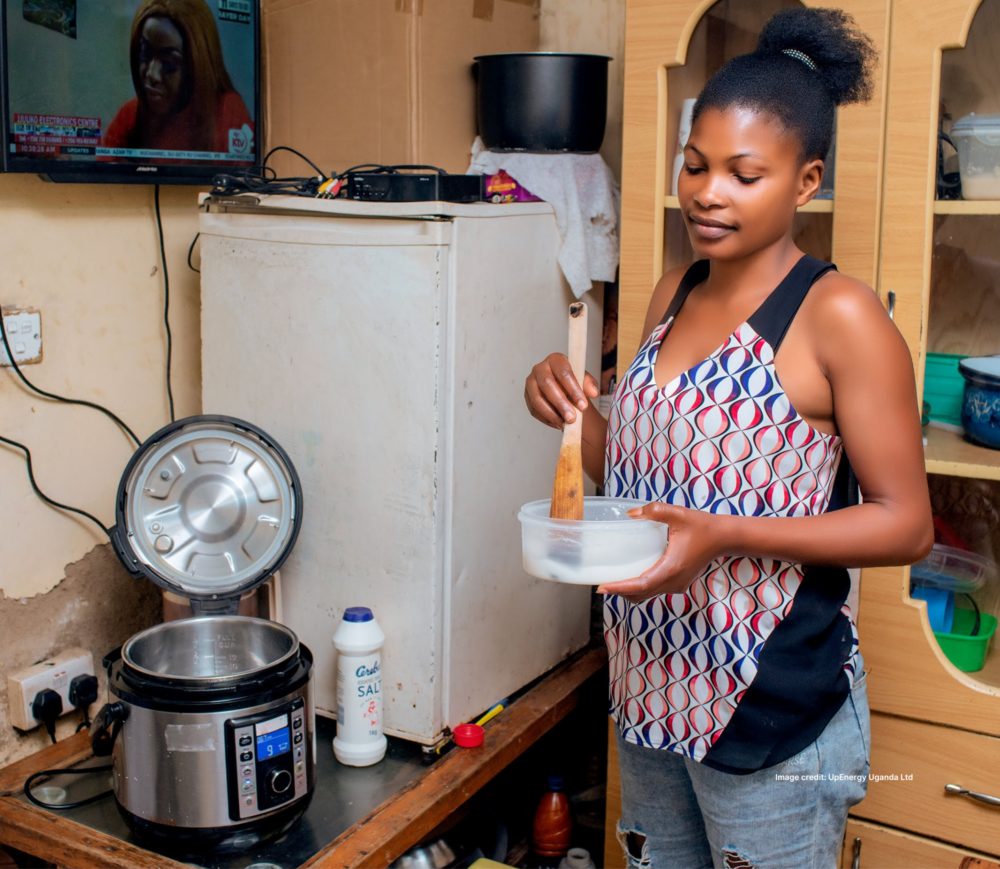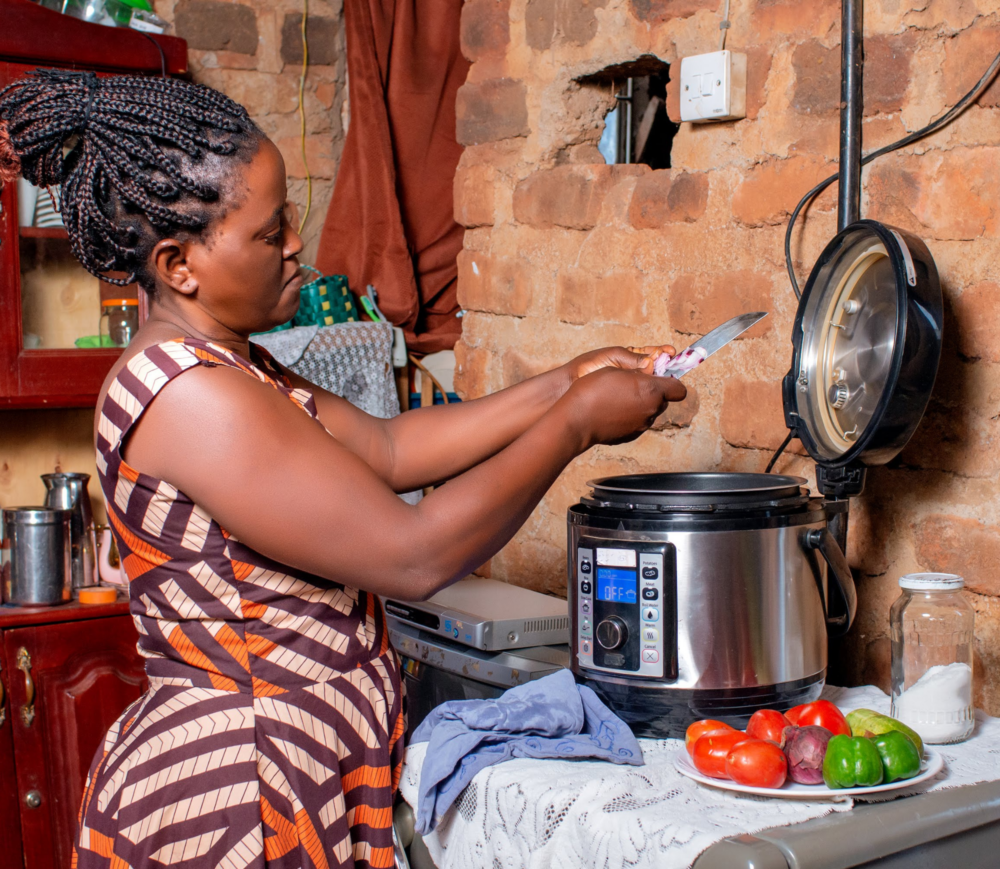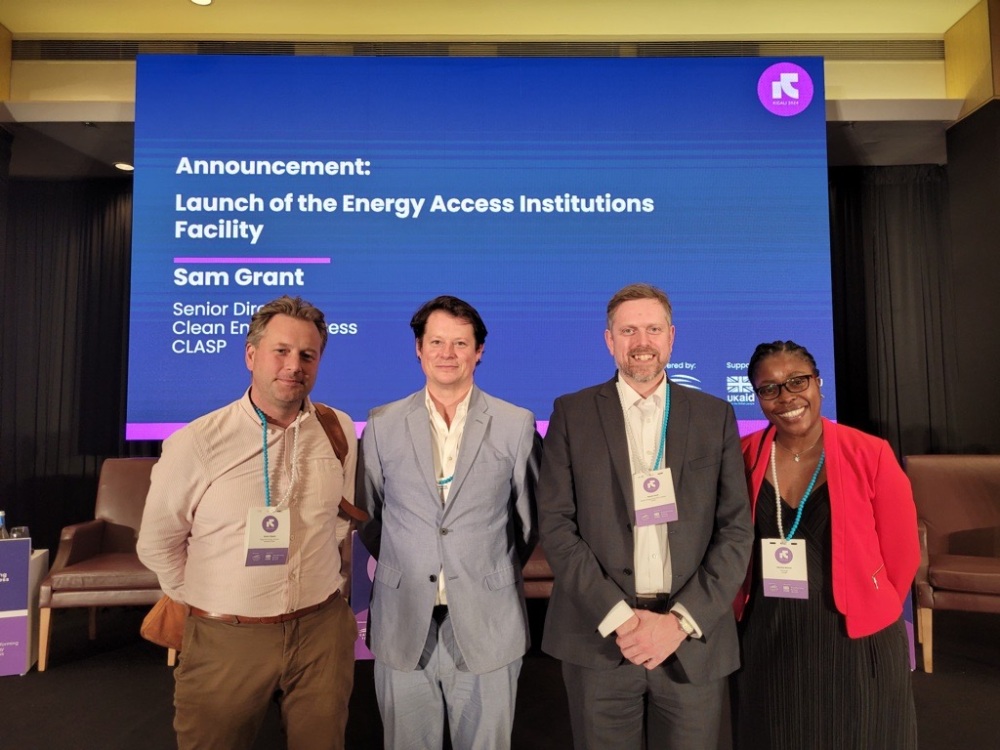Developing a Test Method for Underserved Electric Pressure Cooker Markets
In 2020, the Global LEAP Awards launched the inaugural Electric Pressure Cooker (EPC) Competition. Through the Electric Cooking Impact Series, we share insights into the role of EPCs in enhancing community resiliency to global shocks like the COVID-19 pandemic.
In 2020, the Global LEAP Awards launched the inaugural Electric Pressure Cooker (EPC) Competition. Through the Electric Cooking Impact Series, we share insights into the role of EPCs in enhancing community resiliency to global shocks like the COVID-19 pandemic. With support from the UK Aid’s Low-Energy Inclusive Appliances (LEIA) and Modern Energy Cooking Services (MECS) programmes, the competition received 39 product nominations from 15 companies in 8 countries.
“There is so much utility for electric pressure cookers from a cost, health, energy, and environmental sustainability perspective. Working with Efficiency for Access on this project has really shown the potential of this technology. It is completely changing the game for cooking—I’m excited for consumers to have this opportunity.”
-John Mizia, Energy Institute at Colorado State University
Cooking with electricity provides a wide range of benefits, from reducing GHG emissions and personal exposure to harmful pollutants, to lowering the burden of disease associated with household air pollution.
With the launch of the Global LEAP Awards for electric pressure cookers, CLASP partnered with the Energy Institute at Colorado State University to develop the first ever test method for electric pressure cookers with special considerations for consumers in off- and weak-grid contexts.
A robust test method is essential to accurately evaluate energy consumption and efficiency, safety, and cooking capacity, with a particular focus on safety, usability and likelihood of adoption. The partners and process – which involves design, beta-testing and in-situ pilots – are outlined below.
Biomass Cooking Experts Evaluate a New Solution
“For off- and weak-grid communities, the EPC is the most realistic and sustainable cooking alternative. Most of these units are very low wattage—as low as 400 Watts—and if designed appropriately, can work with national grids, microgrids and solar home systems,” explains John Mizia, Director of the Advanced Biomass Combustion Lab at the Energy Institute. For more than a decade, Mizia’s team has specialized in biomass and gas cookstove development and testing.
“The [Energy] Institute has tested more different types of biomass fuels than probably any lab in the world. We’ve done wood, charcoal, corncobs, woodchips, wood pellets, cow and alpaca dung, dried human feces, salt content woods from almost every continent.”
The biggest difference between biomass and e-cooking technologies is particulate emissions. To quantify the energy content of the fuel, the Energy Institute team uses a hood to capture particle and carbon monoxide outputs of biomass stoves, weighing the fuel before and after the cooking process. EPCs remove this consideration from the test process completely.
“With biomass cookstoves we have been testing and designing products to get the lowest possible emissions with the highest energy efficiency. The reality is that no biomass cookstove will be zero emissions but EPCs are—they solely rely on electricity.”
Testing for Safety
Using a combination of high-pressure and temperature, EPCs can cook meals in less than half the time and energy as alternative e-cooking mechanisms. However, this combination can prove dangerous if EPCs are not designed properly. One of the safety benchmarks an EPC must employ is emergency pressure release functionalities. This functionality ensures that lids do not come off while the appliance is cooking or if the EPC tips over, the pressure does not cause it to burst open with hot food and steam.

“Some of the first tests are of the safety pins and locks. In ultra-high pressure, the pins should pop off and provide a larger relief hole. We evaluate all of those components individually and ensure there is a safety margin for pressurization. We are also looking at the handle during operation to see whether the temperature is higher than the material capability of the rubber tip. We don’t want customers to burn themselves while cooking or accidentally get blasted with boiling steam,” explained Mizia. The lab is also using a burst chamber to test the amount of pressure required to explode the appliances.
“If the system locks and you’re constantly adding energy, there needs to be a mechanism to relieve the pressure,” Mizia demonstrated. “It seems that so far every Global LEAP Awards nominating company has taken that into consideration.”

Ensuring Consumer Protection
In most off- and weak-grid settings, clean cooking technologies like EPCs represent an aspirational purchase and usually require large investment for low-income families. The average charcoal cookstove sold in markets across East Africa ranges from $3–5, whereas EPCs generally range from $80–200 USD. To ensure consumer protection, Mizia’s team checks for product labelling, guides and branding

“It is common practice in East Africa to purchase a cheap ceramic cookstove that breaks in 2-3 months. Customers throw them out and buy a new one,” Mizia explained. But with electric pressure cookers, the higher-cost should come with consumer guarantees. The Global LEAP Awards is taking warranties into consideration for Winner and Finalist products.
Usability Testing
In addition to the lab testing, the Competition will conduct usability testing in Nairobi, Kenya. Usability tests provide further insights into the needs and aspirations of disparate customer groups, detailing product performance and cooking quality in real households.
One of the biggest limitations of lab testing is evaluating cooking quality and food taste. While the Institute can simulate energy output for different areas of the world, they are not physically preparing any meals in the cookers. “We are evaluating boiling and sauté features, but considerations like taste are more subjective to the consumers. That is where usability testing comes into play.”
Customers will report on the products’ ease of use—products should be intuitive and offer simple instructions. The Global LEAP Awards will allocate cash prizes based on User’s choice (best overall score) and the forthcoming Buyers Guide will highlight specific EPC attributes like best for frying or heavier foods.
A Final Word
“From an engineering perspective, no biomass cooking technology is truly the gold standard for particulate emissions. Even low-emissions technologies still have environmental and human health impacts. E-cooking technologies, especially the EPC, can revolutionize the cooking experience for off- and weak-grid communities,” says Mizia.
Results of the lab testing of the Global LEAP Awards Electric Pressure Cooker Competition are expected in November 2020. Usability testing is expected to begin November 2020. Simultaneously, the Awards are conducting a pilot results-based financing (LEAP+RBF) for electric pressure cookers, supporting seven distributors to sell more than 5,000 products in Kenya.









